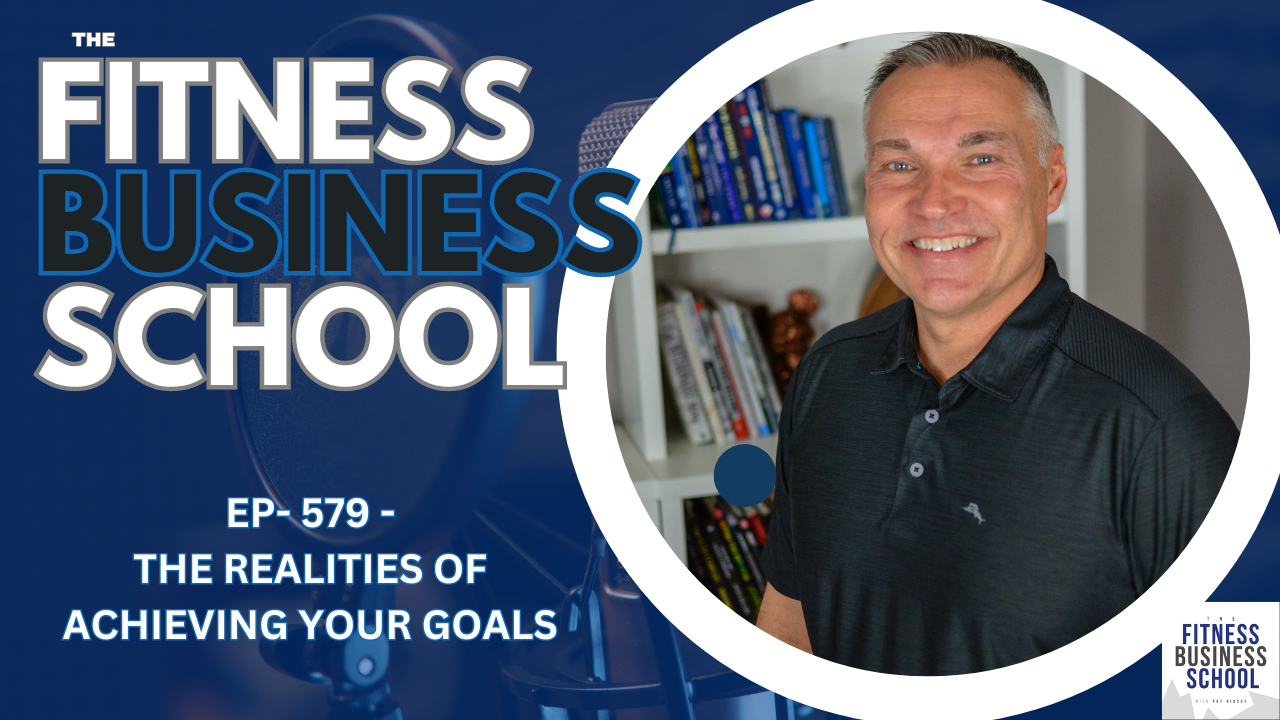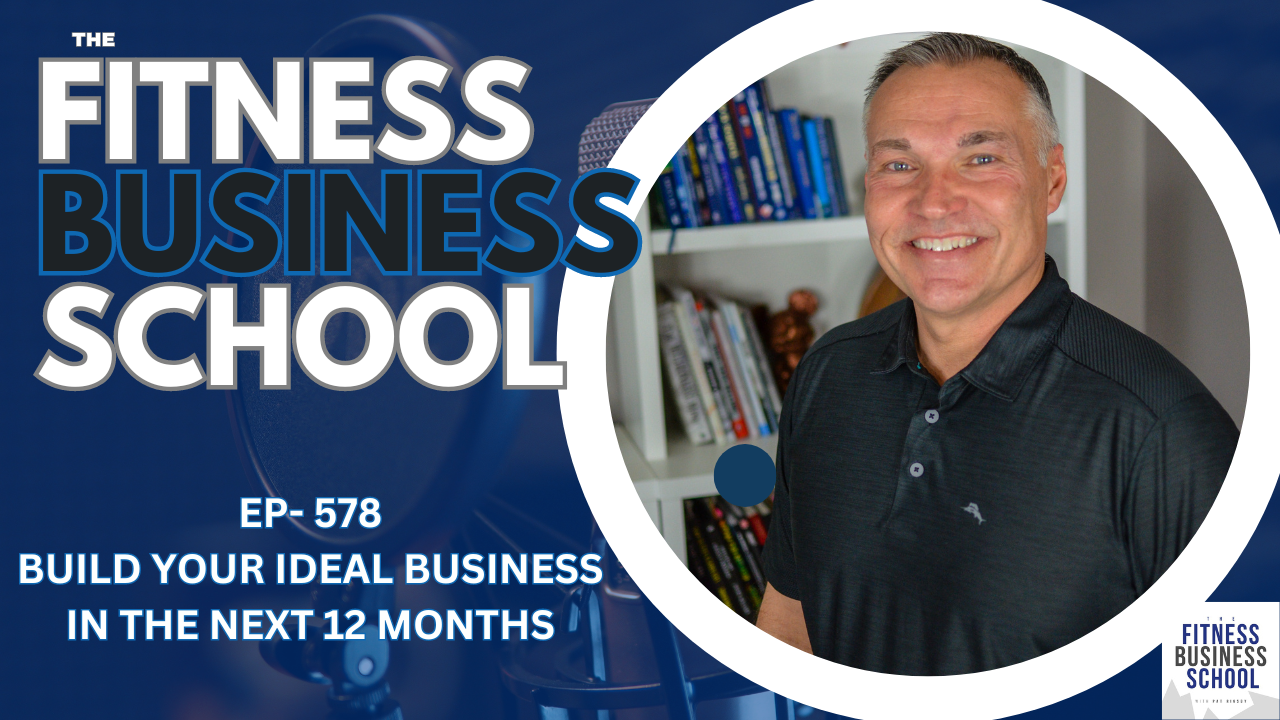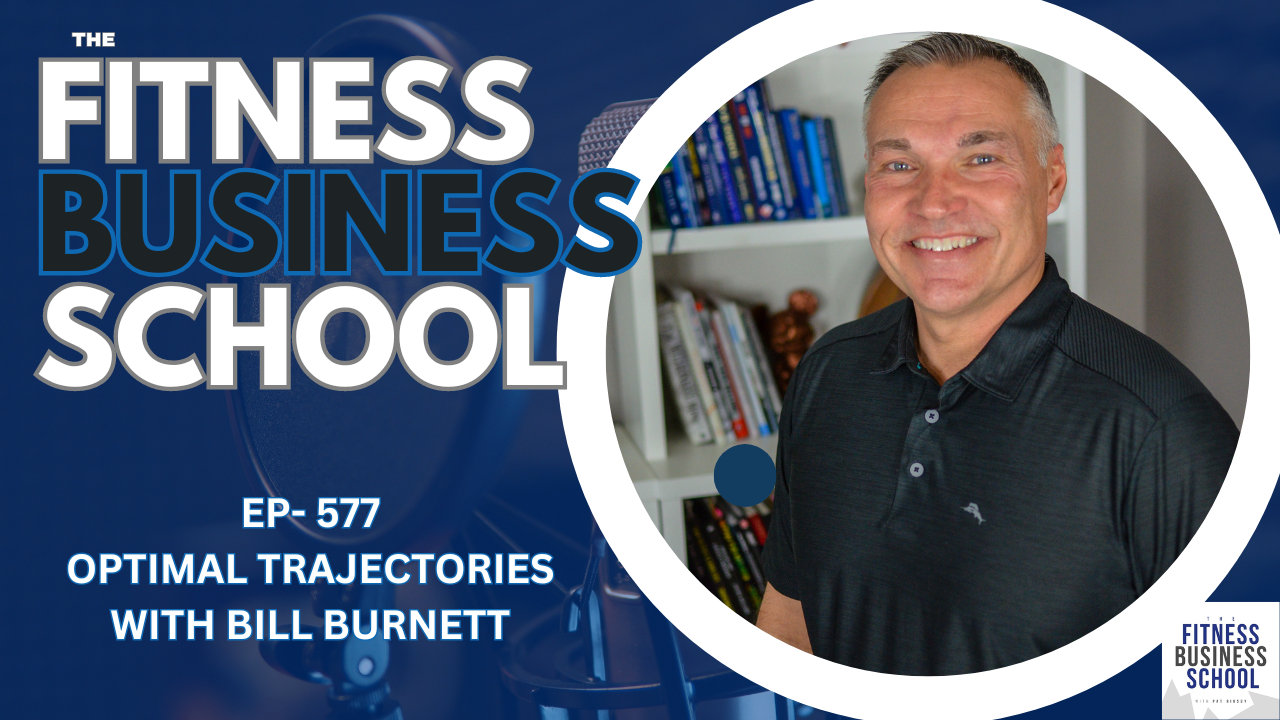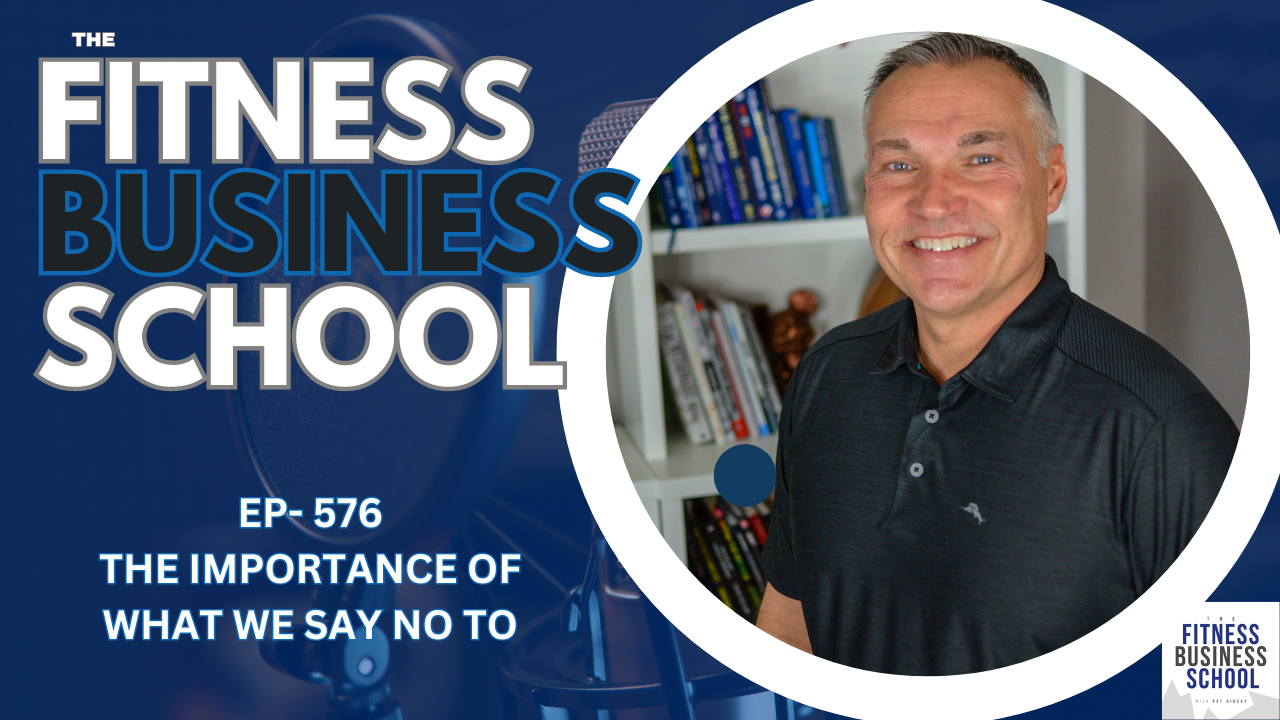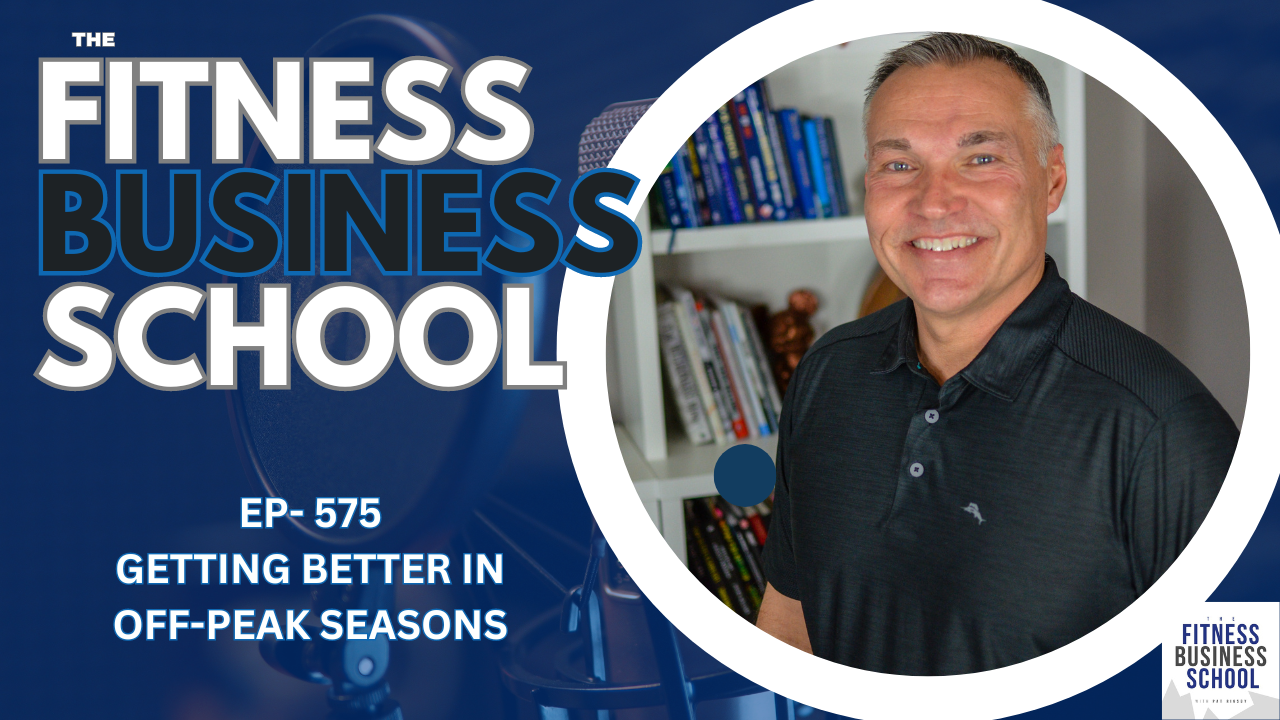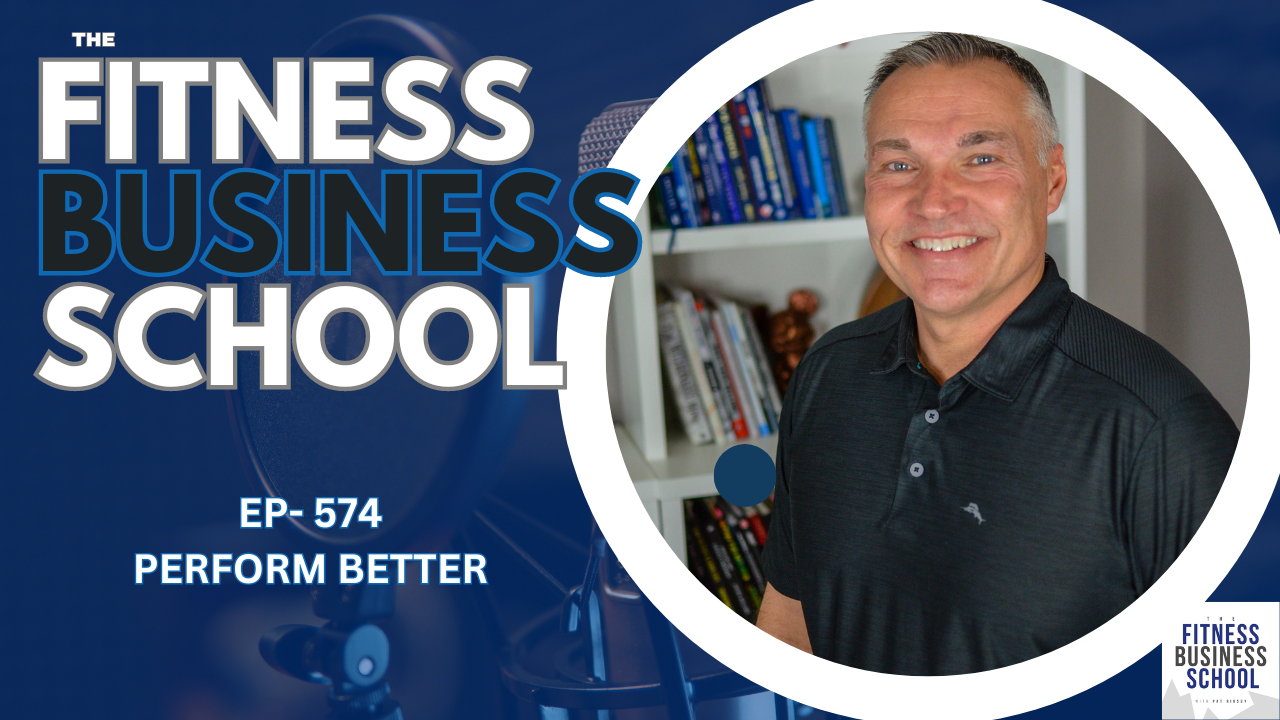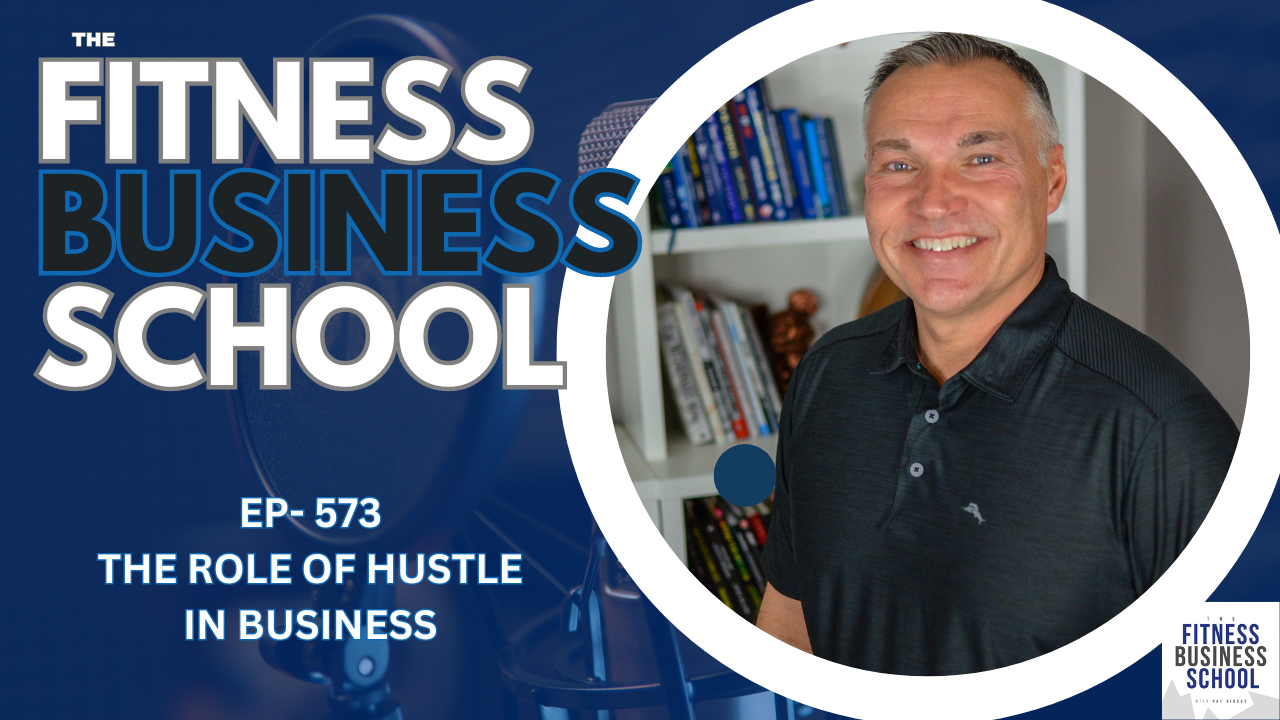Show Notes
00:00 Introduction to Achieving Goals
00:28 Crafting Your Ideal Business
01:34 Step 1: Gaining Clarity
03:29 Step 2: Growing Your Identity
06:35 Step 3: Crafting the Plan
10:11 Consistent Execution and Accountability
12:00 Conclusion and Special Offer
Full Transcript
Hey Pat Rigsby here and in today’s episode I’m giving you the four steps you need to achieve any goal. Let’s get to it.
Welcome to the Fitness Business School podcast, the show for fitness business owners who
want to grow their income, increase their impact and improve their lifestyle. Be sure to listen to the end
of this episode because we have a brand new special offer exclusive for listeners. So stay tuned.
Currently I’m spending some time with people, helping them craft out and move towards creating their ideal business. Like building it. For a lot of people, it’s this re engineering or renovation project, because most people I work with already have a business and sometimes they get off track.
Sometimes they feel like, Hey, you know what? I’m working hard, but I don’t feel like I’m moving closer towards what I want to have. And we’ll just hit the reset button and map out the blueprint for what they’re trying to build. And we’ll reverse engineer a path to go from. Where that place is to where they are today.
So I wanted to give you the four steps that I take people through, not necessarily trying to undermine my own opportunity to coach or consult with you as the listener, but I understand that some people want to do stuff themselves and I still want to be helpful if you’re willing to give me your time and attention to listen to this episode.
So step one, I think, is very much about gaining clarity. I think you have to know where you intend to go. Now, I will say that knowing that goals are always a moving target as you approach a goal and that it’s attainable, usually you aspire for more and that’s okay, but the goal is. The goal is still that kind of North star that, that you use to focus your efforts, that you use, that motivates you, that helps you start to make decisions.
So it’s great that as you get closer, you gain confidence you feel good about your progress, hopefully, at least you should, but the goal in my mind is very much, if you were to type in an address on an app, a map app on your phone, then that’s your destination. Doesn’t mean it’s your permanent destination that you’re never leaving, but it gives you the ability to create a map from where you are to where you want to go.
So that’s the first thing that we need to do. We need to get clarity. And for a lot of us, we just don’t have it. We just don’t have the clarity about where we want to go because things just seem foggy, right? Like you lose sight of what’s possible. You start, maybe you started to doubt yourself and think, maybe I can’t do that.
Maybe that was pie in the sky thinking I would encourage you to step back, take a moment and get clear about what you want. And frankly, it’s probably more than a moment. You want to make decisions. You want to think about what your role is going to be, what your, who your ideal client is, how you’re going to connect with them, how, what kind of business model you want to run, what kind of lifestyle you want to have and what kind of business you need to support that.
So get clarity about those things. Step two, and this is one that I don’t really hear too many people talk about, but it’s growing your identity. I think you have to start to appreciate the fact that if you want something different, if you want something better than it usually revolves around you evolving as the owner.
To get there because the way that you typically operate now is precisely what is needed to achieve the results that you’re getting, but yeah, you can have a strategic plan, you can have the ideal business blueprint, but it still requires somebody to execute it. So if you want to achieve something you haven’t achieved before, then you got to lean into growing and improving and evolving, and I don’t mean that in some metaphysical abstract sort of way.
It’s a little clearer than that. I think it’s, I’ve had plenty of people that are very smart and very talented that maybe they’re running a business that does a couple hundred thousand dollars a year, and they aspire to build a business that does a million dollars a year, the million dollar a year business owner, they, they have different responsibilities.
They’re the type of team or the size of the team they’re managing looks different. The number of people they’re serving probably looks different or the pricing looks different. The role that owner plays in the business probably looks different. And it’s a step by step evolution. You need to start doing the things that incrementally move you towards where you want to be.
One step at a time, week by week, one choice at a time. And you stack these behaviors, these actions up, and you start to stretch yourself a little bit. And the reason I think that this is simpler than people make it is in our industry. I think we certainly understand the concept of progressive overload, right?
You challenge yourself a little bit and you adapt, you challenge yourself a little bit and you adapt progressively improving and adapting. So you have the capacity to do more. That’s how this works in business ownership, but if you’re not challenging yourself and if you’re not adapting you don’t improve.
So that’s a requirement you have to commit. Otherwise you’re just going to fall back to being where you are today. Even if you create a surge of new business, you haven’t evolved enough to manage that and sustain it. It will continually revert back. No different than the people who hit it big in the lottery, losing their money or whatever else over time, because they were not equipped for the things that brought that, that new found surge of wealth brought with it.
All right. So that’s step two. Step three is you need to craft the plan to get to where you want to go. And so once you’ve decided to commit, once you design your plan or you know where the destination is, you design your plan. And I think that again, there, there are a lot of missteps on this one. And so it’s not a, I don’t think it’s a surprise that most plans don’t end out leading people to the outcome they want.
It’s because most plans are designed without considering the person or the circumstances they’re operating in. I think that if you want somebody to succeed, then you have to build the plan around the reality that person operates in. Yeah. We have to grow, we have to evolve, but let’s face it.
If I’m working with a business owner, that’s doing a couple hundred thousand dollars a year, that business is probably paying a, substantial amount of that person’s bills, or maybe even all of their bills, if they’re a it may be supporting their family, putting a roof over their head, paying for the wants and needs of the kids and all that stuff.
And the person operating this business has a life, right? They may have a family, they may have kids, they may have other obligations. They’re probably neck deep in managing the business just to sustain where it is. I think a lot of people that kind of design a plan from afar or they’ve got coaching programs or whatever else, they’ll say, here’s the plan.
Just blow everything else off, burn the boats and do this. I’m like, man, that’s, I don’t think that’s how the world works. I don’t think you just abandon all your current responsibilities to chase the new one. And if you do, frankly, you’re probably not somebody I’d want to work with much anyway. You have to build the plan that meets them where they are today.
You have to say, okay, here’s what we can do to make progress this week. And then here’s what we do to make progress next week. And that sustained effort, that consistent action is how people thrive, how they succeed, how they win, and it may feel slow or deliberate, but you can make an amazing amount of progress in six months or a year, a truly amazing amount of progress.
I’ve seen people transform their businesses and their lives in that kind of timeframe. But they’ve done it week by week and they’ve not had to just abandon everything else to get there. I think that crafting a plan that is realistic, that can be executed, that’s still challenging and motivating. I think that requires a smarter plan than most people.
And very much like the old Abraham Lincoln adage, if I had six hours to chop down a tree, I’d spend the first five hours sharpening the axe. I, getting clear about these first three steps, the ideal business blueprint the clarity on who you need. To be, to achieve these goals and crafting the right plan.
I think those things, it’s almost like people gloss through that stuff instead of really try to build a winning plan. And it, but if you have a great plan and then you commit to working the plan. And executing it week after week, man that’s the formula for success. And that’s why I’m such an advocate for accountability.
That’s why. We weave it into a lot of what we do because we need consistent execution to get from where we are to where we want to be. And I think most of us, we know that our clients are, they didn’t achieve all their goals in a day, but if they were consistent and you provided a framework for them to consistently show up and thrive in, they did great.
That’s what this looks like for. Us achieving our goals or anybody achieving their goals as well. Remember it, our goals are achieved through our actions, not our intentions. So if you can stack up these wins week after week, progress, momentum, you start to reap some of the rewards. You didn’t have to sacrifice your current clients or your family or whatever else in the process.
To me, that’s how you, as a current business owner. Can build a truly great business. There’s a way to do it. It’s just a lot of people don’t think that they can change because they feel like they’re painted into a corner with what they’re already responsible for. No, it just requires clarity, a commitment to evolving as an owner, building
the right plan for you and consistent week by week execution.
You do that and you certainly can build your ideal business. And frankly, you can achieve most any goal you set out to achieve.
Thanks for listening to this episode of The Fitness Business School.
Before you go, I have a quick announcement:
One of of the things that we’ve been doing with our current clients is taking them through this Ideal Business diagnostic and really what it is, this checklist that allows you to pinpoint exactly what your business needs next so you can keep improving, keep growing, and build a business that you love to own, one that pays you well, one that allows you to have the impact you wanna have and one that allows you to have a lifestyle that you truly enjoy.
In this diagnostic, we walk through everything and we do an evaluation and can instantly pinpoint what you need to do next to build that business that you want. I’m going to extend this opportunity to get on with either me or my team and take you through this evaluation and fix your business’s most vital needs fast.
So if we take you through this, you’re gonna be able to make those vital changes that you need to finally have what I call your Ideal Business. If you’d be interested in going through this entirely free, risk-free diagnostic with us and learn what you already have in place, what you’re doing well and where are your greatest opportunities for rapid improvement are just shoot me an email with diagnostic in the subject line to pat@patrigsby.com.
Again, an email to pat@patrigsby.com with diagnostic in the subject line will get
you scheduled and take you through this evaluation to help you build the business you want.

